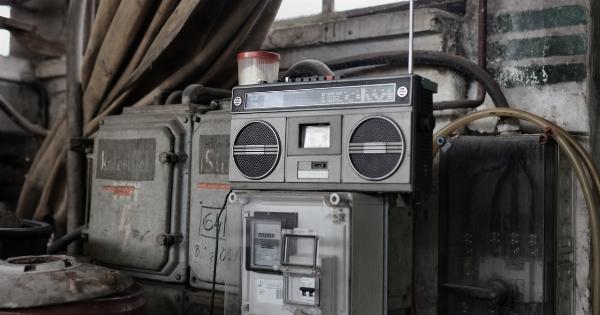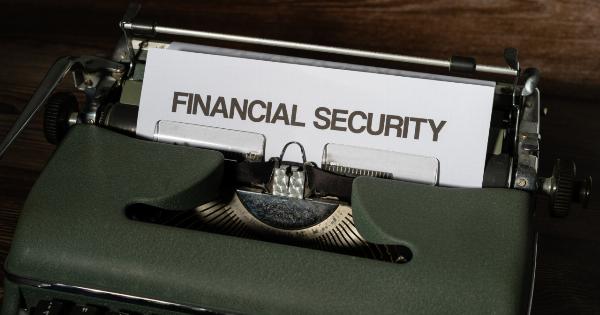Saving money is an essential aspect of financial planning. Whether it’s for a dream vacation, a down payment on a home, or a comfortable retirement, putting your savings in the right place is crucial to ensure their safety and growth.
In this article, we will discuss various strategies and options for safeguarding your hard-earned savings.
Evaluating Your Risk Tolerance
Before diving into the specifics of protecting your savings, it’s important to assess your own risk tolerance.
Some people are comfortable with taking higher risks in the pursuit of higher rewards, while others prefer lower risk options that prioritize stability over potential growth. Understanding your risk tolerance will help you make informed decisions about where to allocate your savings.
FDIC Insurance: A Safety Net for Deposits
One of the most secure places to store your savings is in a bank account that is insured by the Federal Deposit Insurance Corporation (FDIC). The FDIC provides up to $250,000 in deposit insurance per depositor, per insured bank.
This means that even if the bank fails, your deposits are protected, up to the insured limit. It’s important to note that not all types of accounts are covered by FDIC insurance, so be sure to check with your bank to ensure your savings are eligible.
Diversification: Spreading out Your Investments
Another important strategy for ensuring the safety of your savings is diversifying your investments.
Instead of putting all your eggs in one basket, consider spreading out your savings across different asset classes, such as stocks, bonds, and real estate. Diversification reduces the risk of losing all your savings if one investment performs poorly. By allocating your savings across multiple investments, you can potentially achieve a balance between growth and stability.
Saving for Retirement: Employer-Sponsored Plans
If you’re saving for retirement, taking advantage of employer-sponsored plans can be a smart move. Many companies offer programs such as 401(k) plans, which allow employees to contribute a portion of their salary to a retirement account.
In some cases, employers also match a percentage of the employee’s contributions, effectively doubling their savings. These plans often offer tax advantages as well, making them an attractive option for long-term savings.
Government Bonds: A Secure Investment
Government bonds are another safe option for protecting your savings. When you purchase a government bond, you are essentially lending money to the government in exchange for regular interest payments and the return of the principal amount at maturity.
Government bonds are considered one of the least risky investments since they are backed by the full faith and credit of the issuing government. They offer a predictable income stream and are a popular choice for risk-averse investors.
High-Yield Savings Accounts
If you’re looking for a combination of safety and relatively higher returns, high-yield savings accounts can be a suitable choice.
These accounts typically offer higher interest rates than traditional savings accounts while still providing FDIC insurance. Online banks often provide competitive rates since they have lower overhead costs compared to brick-and-mortar banks.
However, it’s important to understand the terms and conditions of these accounts, including any monthly fees or minimum deposit requirements.
Real Estate: A Tangible Investment
Investing in real estate can be an effective means of safeguarding your savings while potentially generating income. Real estate holdings, such as rental properties or commercial buildings, offer stability and the potential for long-term appreciation.
Additionally, real estate investments can provide diversification to your portfolio, reducing the overall risk. However, it’s important to thoroughly research the real estate market, assess the potential risks, and consider factors such as location, property management, and maintenance costs.
Gold and Precious Metals
Gold and other precious metals have long been considered safe-haven investments. During times of economic uncertainty, the value of gold tends to rise, making it an attractive option for investors looking to protect their savings.
Gold can be purchased in various forms, including bullion, coins, or exchange-traded funds (ETFs) backed by physical gold. While gold can be a hedge against inflation and currency fluctuations, it’s important to fully understand the risks and market dynamics associated with investing in precious metals.
Insurance: Ensuring Financial Security
Insurance plays a critical role in safeguarding your savings and providing financial security.
Various types of insurance, such as health insurance, life insurance, and property insurance, protect you and your assets from unforeseen events or emergencies. By transferring the risk to an insurance company, you can mitigate potential financial losses that could otherwise deplete your savings.
It’s important to review your insurance coverage regularly to ensure it aligns with your current needs and circumstances.
Setting up an Emergency Fund
Regardless of your investment choices, establishing an emergency fund is essential for the safety of your savings. An emergency fund acts as a financial buffer during unexpected events, such as job loss, medical emergencies, or major repairs.
Ideally, an emergency fund should cover at least three to six months’ worth of living expenses. By having a well-funded emergency fund, you can avoid tapping into long-term savings or incurring debt in times of crisis.
Conclusion
Protecting your savings requires careful consideration and a well-thought-out strategy.
By understanding your risk tolerance, diversifying your investments, and taking advantage of options such as FDIC-insured accounts, employer-sponsored plans, government bonds, real estate, and insurance, you can ensure the safety and growth of your savings. Remember to regularly reassess your financial goals and make adjustments to your savings plan as needed to stay on track for a secure financial future.




























